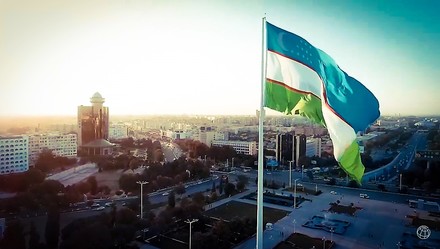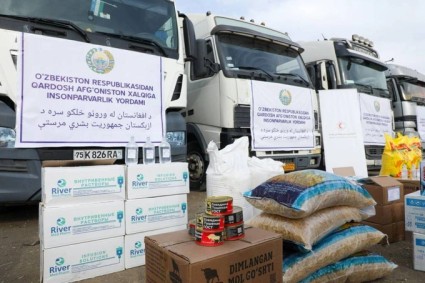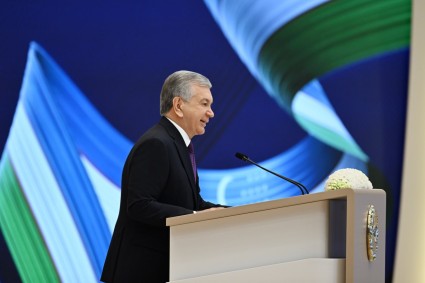The latest edition of the World Bank’s Economic Update for the region released today indicates that, in 2020, Uzbekistan is projected to remain one of two countries in the Europe and Central Asia region that will experience economic growth, despite the global economic recession driven by the COVID-19 pandemic.
The COVID-19 pandemic is the most severe crisis Uzbekistan has faced since the economy’s recovery from the breakup of the Soviet Union. It has adversely affected the country’s growth and resulted in declines in employment, wellbeing, and incomes of citizens.
In the first half of 2020, GDP growth was nearly zero, compared with growth of 5.8 percent in the first half of 2019. Investment in fixed capital decreased by 12.8 percent in the same period. The unemployment rate increased sharply from 9.4 percent in the first quarter of 2020, to 15 percent in the second quarter.
Higher gold production and growth in agriculture helped offset a sharp fall in industry and services. Despite a 19 percent decline in remittances, a cumulative increase of 17 percent in social payments and a 10 percent increase in minimum wages since February have helped preserve private consumption.
Lower remittances and a wider trade deficit widened the current account deficit to 7.7 percent of GDP in the first half of 2020. Exports fell by 22.6 percent in the same period, due to global supply chain disruptions and a fall in key commodity prices (natural gas, metals). Imports fell by 15 percent due to a sharp fall in machinery and capital imports.
Lower revenue collections and large anti-crisis spending contributed to a fiscal deficit of about 5 percent of GDP in the first half of 2020. About 2.5 percent of GDP was directed to additional health spending, increases in low-income allowances, support to enterprises, and an expansion of public works. Despite a large revenue increase from higher gold exports, weaker economic conditions and tax deferrals contributed to a two-percentage point year-on-year decline in revenues as a share of GDP.
Annual inflation was eased down to 11.6 percent in August 2020 allowing the Central Bank of Uzbekistan to cut its policy rate twice in 2020, from 16 to 15 percent in April, and to 14 percent in September. Anti-crisis credit lines to firms helped increase credit to the economy by 18 percent in January-August 2020.
“The COVID-19 crisis in Uzbekistan has almost entirely extinguished GDP growth in 2020, and increased poverty levels for the first time in over two decades. To mitigate the economic, social, and health consequences of the pandemic, the Government has been taking anti-crisis policy measures. Despite the current challenges, the authorities have reconfirmed their strong commitment to continue reforms in key sectors of the economy to achieve stronger growth and improve wellbeing of citizens. This is very important to ensure a more resilient and inclusive post COVID-19 recovery,” noted Marco Mantovanelli, World Bank Country Manager for Uzbekistan.
Uzbekistan’s outlook remains positive as market reforms continue to shift the economy towards greater resource efficiency and private sector growth. The lifting of lockdowns in the third quarter of 2020, robust agricultural production, and a partial recovery of remittances will result in stronger economic activity in the second half of 2020 in contrast to the first one.
Annual GDP growth is projected between 0.4 and 0.8 percent this year considerably lower than in 2019, when it reached 5.6 percent. Uzbekistan along with Tajikistan are the only states among 23 countries in the Europe and Central Asia region that are expected to demonstrate growth in 2020 (Table 1). Assuming that lockdowns will not be reintroduced across the country, GDP growth is projected between 4.8 and 5.0 percent in 2021.
Inflation will moderate over the medium-term but remain elevated by further price reforms. The current account deficit is expected to be around 6 percent of GDP in 2020 due to a recovery in remittances and a lower trade deficit. It is projected to remain at this level over the medium-term as imports of machinery and equipment resume post-COVID-19. This deficit is expected to be financed by higher public borrowing and gradually by rising foreign investment.
The projected fiscal deficit of 7.5 percent of GDP in 2020 will moderate in 2021-22 as anti-crisis spending is gradually reduced and revenues recover. It is projected to decline over the medium-term.
The wider deficit in 2020 and the medium-term will be financed by increased external borrowing, and public external debt will increase to 34.7 percent of GDP in 2020. Although the debt has increased since 2017, it is expected to stabilize over the medium-term.















